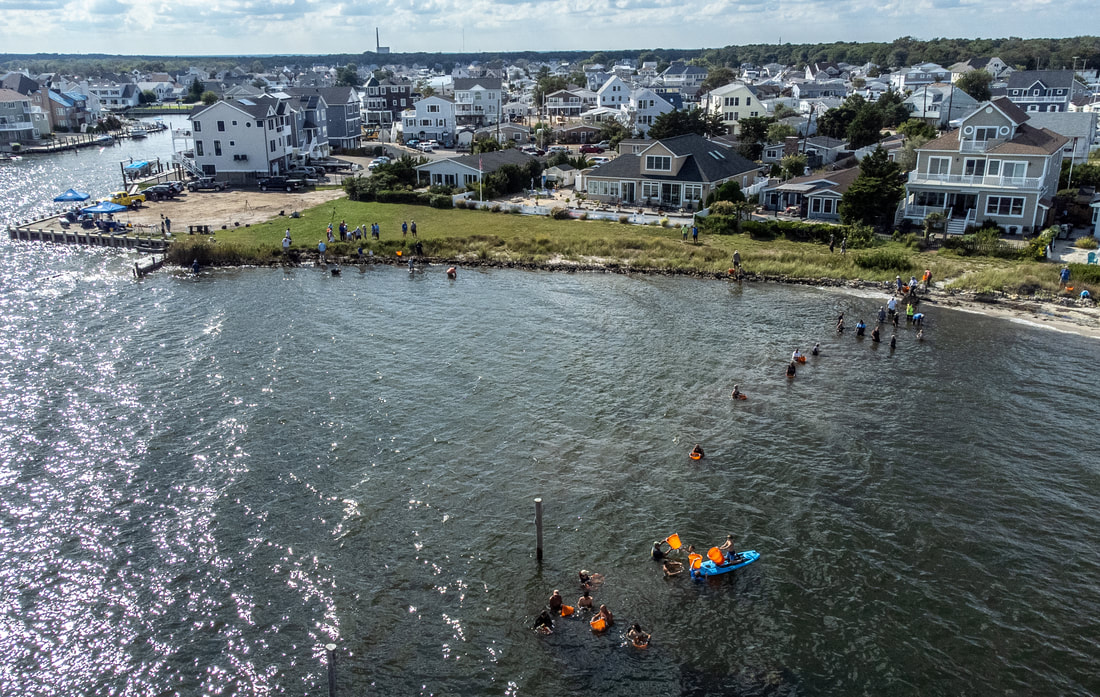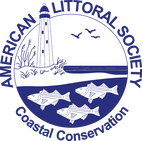|
The American Littoral Society hosted the media, project partners and the public at a special shell-a-bration which marked the next step in the Littoral Society's restoration project at Forked River Beach. On Tuesday, September 13 from 3-5 p.m., the Society held a volunteer work session at the project site, during which shell seeded with oyster larvae was brought to the reef constructed just offshore. That work was followed with a party from 5-7 p.m. to show appreciation for all those who have helped on this project. More than 60 people from the Forked River community and Lacey Township came out to lend a hand with the work and celebrate the milestone. “This is truly a community-based restoration project that’s been a partnership between volunteers, as well as private, public, and nonprofit entities,” said Capt. Al Modjeski, the Littoral Society's Habitat Restoration Program Director. “The project’s success to date has been built on the hard work and contributions of the volunteers from the community. They have made it happen.” The Littoral Society has been building oyster reefs and living shorelines in Barnegat Bay to reduce erosion, create wildlife habitat, and improve water quality. The Forked River Beach site has lost over a hundred and fifty feet of shoreline since 1995 and erosion there has been accelerating since Superstorm Sandy in 2012. Increased sediment in water from shoreline erosion has impacted the water quality of Barnegat Bay. Work on the Forked River Beach reef began in October 2021. The reef segments were made from HESCO units, which are portable protective barriers often used by the US military. Imagine a steel wire crate, four feet tall and three feet wide, that can be filled with various kinds of material - from dirt or sand to rock and shell. For this project, each HESCO unit/reef segment used three connected galvanized steel baskets surrounded by eight outer pockets (aka shell faces). The interior baskets were filled with rock to help keep them in place. At the September 13 work day, recycled shell seeded with oyster larvae was added to the shell faces. The oysters should not only help clean the surrounding water but also help the reef grow. As the reef grows, it will increasingly absorb the bay’s wave energy, rendering the waters between it and the shoreline not only clear, which will stimulate the growth of submerged aquatic vegetation and other marine species, but also calm, which will reduce the gnawing effect of open water currents, thus reducing erosion. Historically, Barnegat Bay had over 12,000 acres of eastern oyster (Crassostrea virginica) beds. Yet today, nearly the entire natural oyster population is gone. With their elimination, Barnegat Bay not only lost the oysters themselves, but the services they provided, such as water filtration, wave energy mitigation, and habitat for marine life. “What we’re trying to do,” said Tim Dillingham, Executive Director of the Littoral Society, “is protect property and the environment through a nature-based system.” Project partners and funders include: New Jersey Department of Environmental Protection, New Jersey Corporate Wetlands Restoration Partnership, Lacey Township, Bayside Beach Club, Stockton University, Albert Marine, US Fish & Wildlife Service, ReClam the Bay and Wildlife Restoration Partnerships. For more information, please visit https://www.littoralsociety.org/forked-river-beach.html.
Kerry Mentzer
9/18/2022 09:37:21 pm
This event was so much fun! Thank you for the opportunity to share in your work Comments are closed.
|
Archives
July 2024
Categories
All
|


